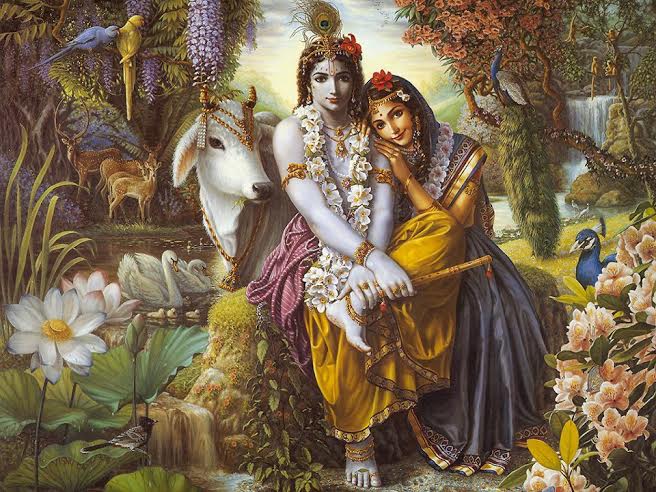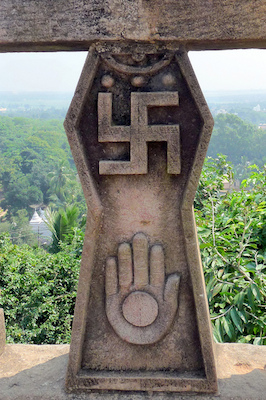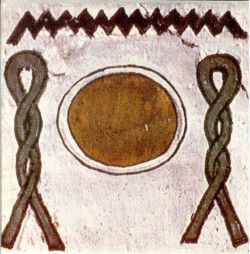The Cycle of Time is a version of history that was virtually forgotten, even though it was common to all great civilizations of antiquity.
It tells us of a time when humankind experienced the highest stage of civilization and how this was eventually lost. It also points to the possibility of a return to that state.
This is an interesting view to consider, not only because it is rooted in ancient yogic tradition, but also because ancient spiritual knowledge has a lot to say about the turbulence and changes of the present moment.
Below is an excerpt from the nonfiction, “The Cycle of Time ~ Ancient Knowledge, India and Uncovered Secrets.”
~
Swastikas are found everywhere in India. They are on the walls and frescoes of temples, on the streets and in the pages of accounting books, in the hands of uncountable gods and goddesses.
Considered an auspicious sign, it portrays the flow of time. Swastikas are symbols of eternal life and of the journey of the soul. Those who get to know the secrets of time were said to become trikaldarshis—knowers of the past, present and future.
The vision of a line following a curve into the distance delineates a world history with no beginning or end. This is how the ancients understood what today we call eternity.
Modern civilization seems to be pushed by a constant impulse to move forward, at each step trying to overcome former achievements and use its energy to trigger the next discovery or creation. The main thing is movement, production: that which lies ahead. Even when the past is being recycled, things are usually labelled original. Forgetfulness is a human trait. The disappearance of the past contributes to the emphasis on the present and on propelling us forward unquestioningly.
This worldview has been amplified by science, where a fixed idea of linear and evolutionary time has played a part in burying our origins.
Besides the passage of time, our past has also been fragmented by ingenious minds that, at all times and under different circumstances, have been working to maintain the status quo. It has been left to historians to try to put the pieces together and assemble the real picture. Yet even they are not free from the burden of their time, and therefore from the influence of an established ideology, whatever it may be.
As we look back into the not-so-very-remote past, we find a completely different perspective of history. Hum so, so hum—that which I was, I shall be again—goes an Indian saying. The civilizations of the East, of Egypt and Greece, as well as those of the Pre-Columbian Americans all had a cyclic approach to history. Plato believed that “the same views have arisen among men in cycles, not only once, nor twice, not even a couple of times, but endless times…” and Aristotle thought that all arts and sciences have reached perfection many times in history and have later been almost entirely forgotten before being completely lost as a result of global catastrophes.
Just as in nature, where things are consumed and renovated in definite cycles, time—in all its vastness and complexity—follows a rhythm, like a cosmic clock in a movement of eternal recurrence.
In reality, this view of history is still unknown. It throws us back into a glorious past, totally in opposition to an unrealistic journey from a stone age. It identifies us as the descendants of dignified and elevated ancestors, true gods and goddesses who once lived on this very earth. It shows us that within a continual pattern of events, we find civilizations successively ascending and descending and thus making way for new civilizations, which will ultimately cause the events that will once again take us to the point at which everything “started.”
Cyclic time is placed within a wider context of life because it is based on the inner journey of the spirit throughout history. It is a metaphysical approach, where the new meets the old and subjective considerations are taken into account.
The more we understand it, the more we rediscover the wisdom and vision of the ancients, which considered man in his totality, in interaction with the material universe and a superior force.
In no other place than India has the issue of existence occupied so many hearts and minds for so long. India is the oldest continuous civilization on the planet, where even today one can still witness passionate discussions over complex and controversial spiritual matters. The way of being and living here was shaped by a permanent force of devotion. Indeed, many aspects of Indian culture have developed from metaphysical or spiritual foundations.
Over time, the many methods of inquiry developed into several schools of thought. Of these, the unique teachings of Raja Yoga of the Brahma Kumaris have been chosen as the basis of this exploration.
This perspective concerns both the understanding and the journey of the human soul, also giving us a general idea of the cosmogony and richness of this ancient culture.
Love elephant and want to go steady?
Sign up for our (curated) daily and weekly newsletters!
Editor: Travis May
Photo: Vishnudas Art





Read 1 comment and reply